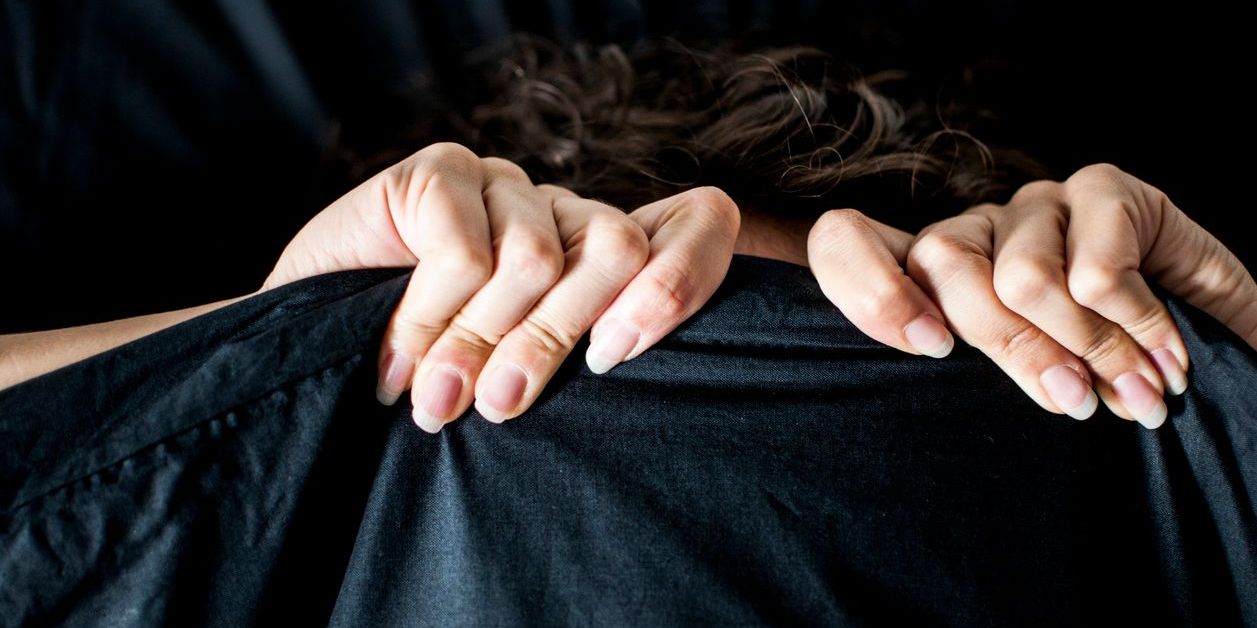Summary: The Anxious Monday effect is a phenomenon among older adults who report Monday is the most stressful day of the week, significantly more stressful than any other day, which may be related to problems with hormone production and communication between the endocrine system and the nervous system.
Key Points:
- Elevated stress on Mondays is relatively common.
- In most cases, elevated stress is related to elevated levels of the stress hormone, cortisol.
- Levels of cortisol in humans are controlled by a system in our brain called the HPA axis.
- Researchers theorize people who experience the Anxious Monday effect may show dysfunction in the HPA axis.
Anxious Monday: Is it Really the Most Stressful Day of the Week?
For some people, yes.
But why?
A group of researchers in the U.K. designed a study called “Are Anxious Mondays Associated With HPA-Axis Dysregulation? A Longitudinal Study of Older Adults in England” with the following goal:
“To investigate whether the association between perceived anxiety and HPA-axis dysregulation is greater on Mondays than on other days of the week.”
At first blush, it’s easy to look at a study like this and think something like this:
“Everybody knows Mondays are more stressful than other days because it’s the first day of the work week, and it happens after we have two days in a row off work.”
It’s true that not everyone works Monday-Friday, but it’s also true that a large percentage of people in the U.S. – and in the U.K., where the study occurred – do work a Monday-Friday schedule, and look at Mondays with some resignation and possibly a touch of dread.
One more thing is true: whether you love or hate Mondays, the day has a bad rap. We can see that reflected in the volume of pop songs about Monday. Consider this list:
- I Don’t Like Mondays
- Manic Monday
- Monday Sucks
- Blue Monday
- Rainy Days and Mondays
- Stormy Monday
- Monday Monday
- Permanent Monday
- She Left on a Monday
- Monday Morning Blues
Some of those songs were written in the past five years, while others were written over 75 years ago, showing that Monday stress is nothing new. But pop songs aren’t the only reason we know Mondays are a problem.
Research on Mondays and Physical/Behavioral Health
In the article we introduce above, the study authors cite previous research that identifies the following associations between Mondays and physical, emotional, and behavioral health. On Mondays, studies show:
- 19% higher levels of cardiovascular disease (CVD) events compared to other days of the week
- Increased incidence of suicide, compared with other days of the week, with stronger effect for people in their 20s
- Lower scores mood assessments that measure real-time symptoms for each day of the week.
The authors of the study on mood assessments and Monday report their data shows “a small but reliable effect” for low mood on Mondays.
However, there’s also a phenomenon called the Sunday Scaries, which is exactly what it sounds like: anxiety about the upcoming week that appears on Sunday, most often on Sunday evening. In a LinkedIn survey conducted online in 2022, results showed:
- 80% of adults in professional jobs report elevated stress on Sunday night
- By age group:
- Gen Z: 94%
- Millennials: 91%
- Gen X: 72%
- Baby Boomers: 69%
They worry about their workload, work-life balance, and leftover tasks from the previous week. When we think about the Sunday Scaries, it makes sense that Anxious Mondays may follow. We can even think of the anxiety people feel on Scary Sundays as part of, or a precursor to, the anxiety people feel on Anxious Mondays.
While there’s no conflict between the concepts of Scary Sundays and Anxious Mondays, there is a potential dissonance between the outcomes we see above and the central hypothesis of the study we introduce above:
Gen Xers and Baby Boomers report the lowest rates of Sunday Scaries, but the evidence base that triggered the study indicates they may experience the most significant effects of Anxious Mondays.
Let’s take a look at this new study, and find out what they learned about the connection between Mondays, stress, the HPA axis, and older adults.
Anxious Monday: Testing Levels of Cortisol
To determine whether the Anxious Monday Effect appeared in biological metrics in addition to self-report stress questionnaires, the researchers examined records from 3,511 adults over age 50 who participated in the English Longitudinal Study of Ageing.
During initial interviews, the research team collected basic demographic information on health, mental health, and overall stress levels from study participants. To assess stress, participants answered two questions:
First question:
Overall, how anxious did you feel yesterday?
Participants answered on a scale of 0-10, where 0 meant not anxious at all and 10 meant very anxious, following parameters established by the U.K. Office for National Statistics.
Second question:
What day was yesterday?
Possible answers included – obviously – one of the seven days of the week.
Next, researchers collected biomarker data, in the form of 2-3 cm long hair samples, during visits one month and two months after the initial assessment. The biomarkers of interest for this study were levels of hair cortisol and levels of hair cortisone. Researchers chose these biomarkers for the study for the following reasons:
- The HPA-axis regulates how the body responds to stress.
- Hair cortisol and hair cortisone reflect HPA-axis activity over the preceding number of months.
- Hair samples function like ice samples or samples from the geological record.
- Assuming average hair growth of 1-2 cm per month, samples collected reflected levels of cortisol associated with questionnaires administered at the beginning of the study.
The HPA Axis – a.k.a. the hypothalamus-pituitary-adrenal axis – is made up of three key organs in our body that play a role in how our nervous system communicates with our endocrine system. Those organs include:
- Hypothalamus: regulates body temperature, mood, hunger, and other physical functions through the autonomic nervous system
- Pituitary gland: produces hormones that trigger the production of cortisol
- Adrenal glands: produces hormones associated with stress, including cortisol, adrenaline, and others
Now that we know all the relevant terms and how the researchers conducted the study, let’s take a look at the results.
Cortisol and the Anxious Monday Effect
To better understand the impact of cortisol on anxiety and stress and connect that impact with the days of the week, the researchers divided the presence of cortisol into ten quartiles that correspond with the lowest and highest levels of cortisol in the hair samples. Participants in quartile 10 had the lowest levels of cortisol, while participants in quartile 90 had the highest levels of cortisol.
Here’s the first result:
People who reported elevated stress on Mondays showed higher cortisol levels than people who didn’t, across all quartiles.
That’s the anxious Monday effect, in a nutshell.
Here’s the second result:
At the 90th quantile of the cortisol distribution – i.e. the highest level – older adults who felt anxious on Mondays had 23% higher cortisol levels after 1 and 2 months compared to older adults who reported higher stress on any other day of the week.
And here’s the third result:
Analysis showed no significant differences in cortisol levels associated with elevated anxiety on other days of the week.
The study authors characterize these results as follows:
“HPA-axis dysregulation is pronounced among older adults who report anxiety on Mondays. This association was observed regardless of employment status, suggesting that both working and nonworking older adults are at risk of HPA-axis dysregulation associated with the start of the week.”
That last sentence surprised us: even people who don’t work, but report experiencing the anxious Monday effect, showed HPA axis dysregulation, as measured by hair cortisol two months after the initial anxiety assessment.
How Can Older Adults Reduce Cortisol?
To mitigate the anxious Monday effect, older adults can learn a specific approach: mindfulness. This approach includes relaxation exercises, breathing exercises, awareness exercises, and learning the basic concepts of meditation.
To learn more about cortisol, stress, and mental health, please read this article on our blog:
How is Cortisol Related to Stress and Mental Health?
To learn about the connection between mindfulness and mental health, please refer to this article:
And to learn practical techniques to reduce cortisol using mindfulness and lifestyle changes, this article can help:
Five Simple Steps to Reduce Stress by Decreasing Cortisol
This study taught us something new: elevated stress on Mondays is associated with elevated cortisol, detectable up to two months after the perceived stress experience. The good news here is that reducing cortisol levels with basic relaxation techniques and mindfulness is inexpensive, easy to learn, and effective. Mindfulness techniques accessible to anyone, including adults over age 50, who were the focus of the research.


 Gianna Melendez
Gianna Melendez Jodie Dahl, CpHT
Jodie Dahl, CpHT